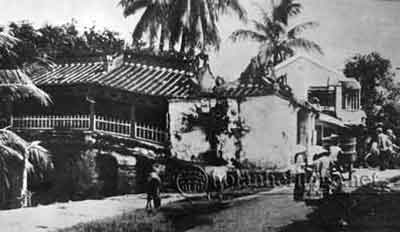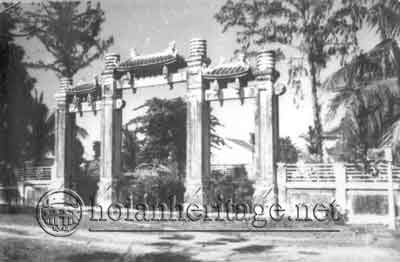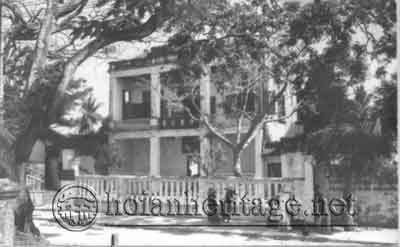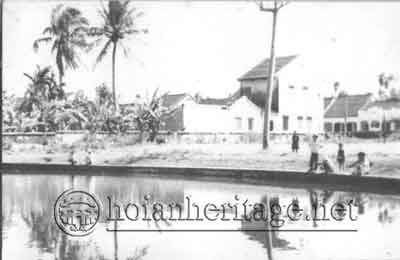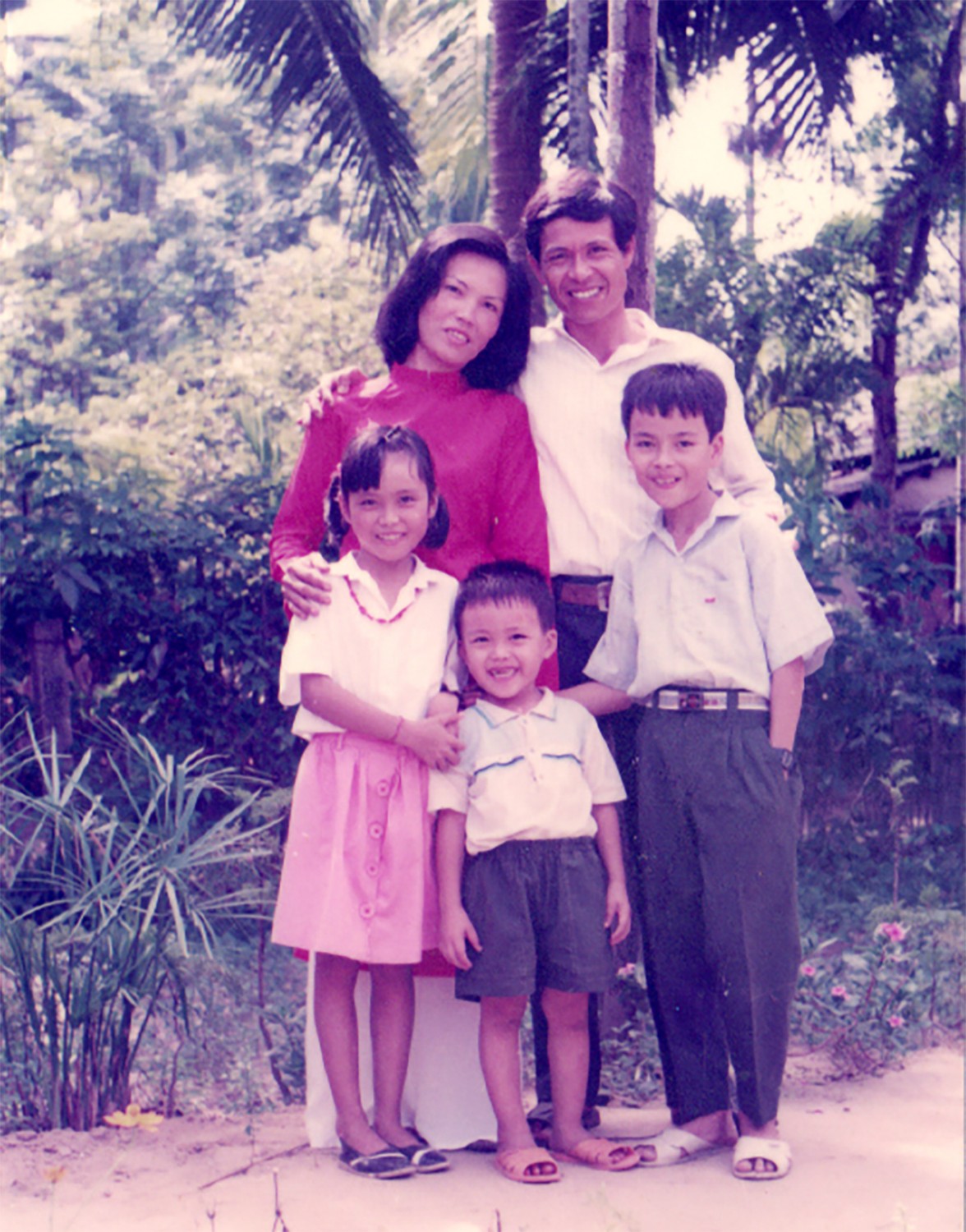Hoi An World Cultural Heritage Conservation Center
Mooncakes in Hoi An
Mid-Autumn Festival is one of the important traditional festivals of the Vietnamese people on the full moon day of the 8th lunar month. For the Hoi An community, after Tet Nguyen Dan, Tet Doan Ngo, Tet Trung Thu is the biggest festival of the year.
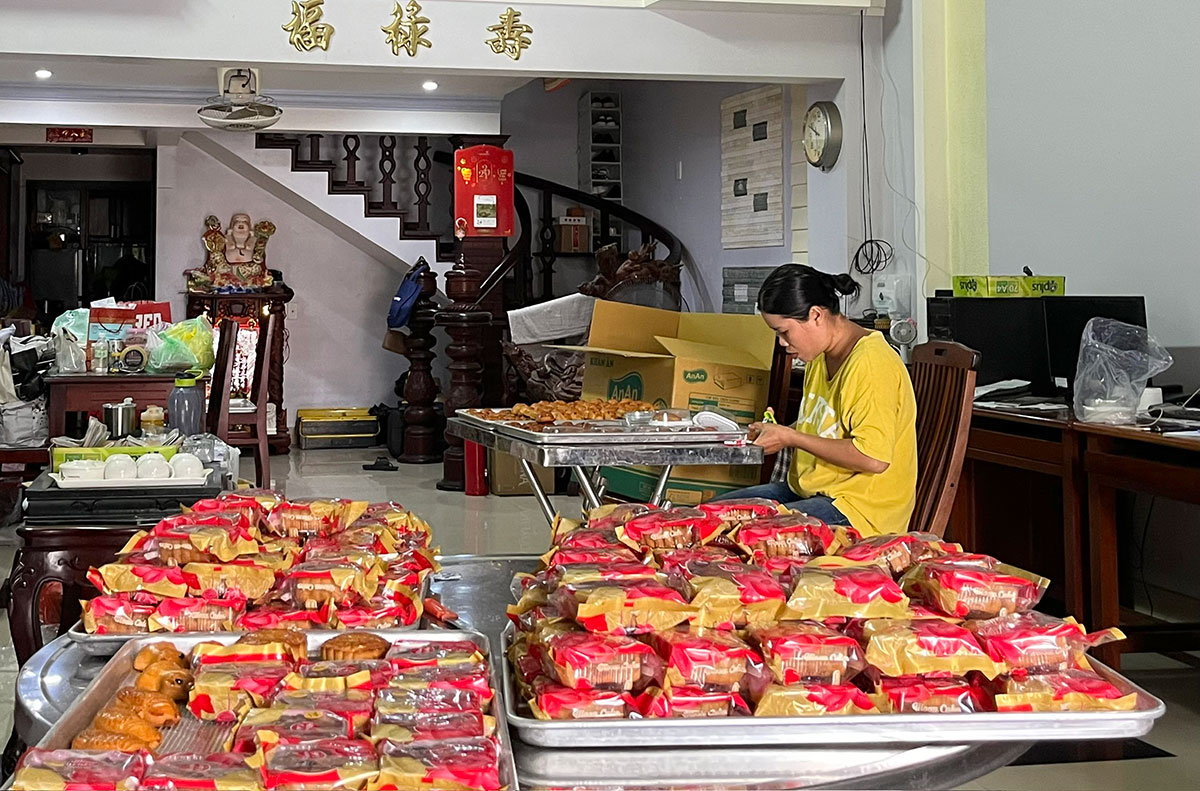
A traditional mooncake bakery owned by Mr. La Tan Nam (Ton Duc Thang street, Hoi An city)
In the first days of the 8th lunar month, from the suburban villages to the inner city, there are bustling sounds and colors typical of the Mid-Autumn Festival. In particular, the sound of drums and cymbals echoes from all the village roads and alleys, blending with the decorative colors of the heads of the unicorns, dragons, lanterns of all kinds... sold in the markets and stalls.
In families, every house sets up an altar and offerings to worship the full moon, praying for favorable weather, peace and prosperity. From ancient times to the present, besides sweet soup, sticky rice, fruits and other sweet cakes, moon cakes are a typical offering, indispensable in the full moon worshiping tray of the 8th lunar month of Hoi An people, especially residents in the old town.
In Hoi An, the craft of making some types of cakes used as offerings during Tet holidays or as gifts has existed for a long time, including typical ones such as green bean cakes, to cakes, ash leaf cakes, pig skin cakes, and gai leaf cakes. According to some documents, green bean cakes in Hoi An are a brand that was affirmed very early in history. In Dai Nam Nhat Thong Chi, the section on Quang Nam, the product section stated "Green bean cakes produced in Hoi An are the best". In addition, green bean cakes are also a valuable product used to offer to mandarins and kings.
According to the memories of the residents of the old town, before 1945, in Hoi An there were famous cake shops such as Xan Thanh (Hoang Van Thu Street), Phu Nhi, Phu Dinh (Nguyen Thi Minh Khai Street), Nam Trinh (Nguyen Hue Street), later there were Truong Sanh Duong, Tuong Ky (Tran Phu Street, later Mr. Xuong's cake shop - Nguyen Thai Hoc Street), Nghia Anh (Le Loi Street)... During the Mid-Autumn Festival, some bakeries in the old town made moon cakes for sale. Most of the moon cake shop owners in the old town are of Chinese origin. Before 1975, there were moon cake shops such as Xan Thanh, Ba In (daughter of Xan Thanh bakery, on Nguyen Thai Hoc street), later there were Truong Sanh Duong, Tuong Ky, Nghia Anh... High-class moon cakes in the past were mainly round baked cakes with mixed fillings, with salted eggs. Later, to diversify the products and serve many customers, establishments made cakes in the shape of pigs and fish, with green bean filling in the middle, suitable for children's preferences. According to folk memories, in the old town there was a Ba In bakery that made black sesame cakes and taro cakes for sale during the Mid-Autumn Festival. The cakes were very delicious, unique, and loved by local residents. According to long-time moon cake makers in the old town, in the 1990s, moon cakes were consumed the most, not only sold locally but also to customers in neighboring areas such as Duy Xuyen, Dien Ban... In recent years, due to the diversity of large cake brands dominating the market, traditional moon cakes of Hoi An are difficult to sell. However, following the tradition left by their ancestors, some families still maintain the family business of making moon cakes. Currently in Hoi An, there are still some traditional moon cake processing establishments such as Mr. La Tan Nam's family on Ton Duc Thang street, Hung Phat bakery on Tran Quy Cap street of Mr. Tran Duc Thanh's family (son of Nghia Anh bakery owner), green bean cake shop at 15 Le Loi (descendants of Mrs. Tan's green bean cake shop), Hanh Hung (Tran Hung Dao street). Households making moon cakes said that the current consumption of cakes during the Mid-Autumn Festival has decreased significantly compared to before, many households make from about 700 to 1000 cakes, some families only make about 100 cakes.
The income from this seasonal job is not much, but those who practice the profession make the cakes with both care and passion for the job to have delicious and quality cakes to serve their relatives and friends during the family reunion Tet holiday. Although the direct owners of the profession are old, the descendants are not interested in the family profession, some people have quite stable jobs, but every Mid-Autumn Festival they spend time to add the color, the bustling sound of the Mid-Autumn Festival and recall the traditional flavor of Hoi An moon cakes.
Over time, the form, design and flavor of moon cakes in Hoi An have been constantly innovated to meet the needs of customers, however, the recipe and flavor of the cake remain unchanged. Making a moon cake requires meticulousness and carefulness in choosing and preparing the ingredients, especially the mixed filling.
Mooncake fillings are vegetarian or salty, depending on the user's preferences. Mixed salty fillings include chicken, pork, Chinese sausage, ginger jam, tangerine peel, ham, cashews, melon seeds, sesame, candied squash, sugar, and salted duck eggs. The cake crust is made of wheat flour and the cake is baked in a charcoal oven or an electric oven.
Vegetarian cakes are usually soft cakes filled with green beans, red beans, lotus seeds, taro, black sesame, coconut, etc. Some types of grilled vegetarian cakes have green bean fillings in the shape of pigs and fish, which are very cute and eye-catching. Decorative patterns on the cake are dragons, phoenixes, lanterns, leaf motifs, etc. Each type of cake brings its own unique flavor, creating a variety of choices for users. The characteristic factor of Hoi An mooncakes is that they do not contain preservatives, so the normal shelf life is about 15 days. Families making moon cakes in Hoi An all pay attention to food safety and hygiene, so the cakes are very popular with local people.
During the Mid-Autumn Festival, in addition to folk cultural activities such as lion dances, unicorn dances, lantern decoration, floating flower lanterns, and displaying ancient trays, Hoi An people also have very elegant customs such as eating cakes, drinking tea, admiring the moon, writing calligraphy, and playing chess. These elegant pleasures have contributed to making the Mid-Autumn Festival in Hoi An unique and distinctive to this land. Therefore, on February 14, 2023, the Mid-Autumn Festival in Hoi An was recognized by the Ministry of Culture, Sports and Tourism as a National Intangible Cultural Heritage in the category of traditional festivals, social customs and beliefs.
In families, every house sets up an altar and offerings to worship the full moon, praying for favorable weather, peace and prosperity. From ancient times to the present, besides sweet soup, sticky rice, fruits and other sweet cakes, moon cakes are a typical offering, indispensable in the full moon worshiping tray of the 8th lunar month of Hoi An people, especially residents in the old town.
In Hoi An, the craft of making some types of cakes used as offerings during Tet holidays or as gifts has existed for a long time, including typical ones such as green bean cakes, to cakes, ash leaf cakes, pig skin cakes, and gai leaf cakes. According to some documents, green bean cakes in Hoi An are a brand that was affirmed very early in history. In Dai Nam Nhat Thong Chi, the section on Quang Nam, the product section stated "Green bean cakes produced in Hoi An are the best". In addition, green bean cakes are also a valuable product used to offer to mandarins and kings.
According to the memories of the residents of the old town, before 1945, in Hoi An there were famous cake shops such as Xan Thanh (Hoang Van Thu Street), Phu Nhi, Phu Dinh (Nguyen Thi Minh Khai Street), Nam Trinh (Nguyen Hue Street), later there were Truong Sanh Duong, Tuong Ky (Tran Phu Street, later Mr. Xuong's cake shop - Nguyen Thai Hoc Street), Nghia Anh (Le Loi Street)... During the Mid-Autumn Festival, some bakeries in the old town made moon cakes for sale. Most of the moon cake shop owners in the old town are of Chinese origin. Before 1975, there were moon cake shops such as Xan Thanh, Ba In (daughter of Xan Thanh bakery, on Nguyen Thai Hoc street), later there were Truong Sanh Duong, Tuong Ky, Nghia Anh... High-class moon cakes in the past were mainly round baked cakes with mixed fillings, with salted eggs. Later, to diversify the products and serve many customers, establishments made cakes in the shape of pigs and fish, with green bean filling in the middle, suitable for children's preferences. According to folk memories, in the old town there was a Ba In bakery that made black sesame cakes and taro cakes for sale during the Mid-Autumn Festival. The cakes were very delicious, unique, and loved by local residents. According to long-time moon cake makers in the old town, in the 1990s, moon cakes were consumed the most, not only sold locally but also to customers in neighboring areas such as Duy Xuyen, Dien Ban... In recent years, due to the diversity of large cake brands dominating the market, traditional moon cakes of Hoi An are difficult to sell. However, following the tradition left by their ancestors, some families still maintain the family business of making moon cakes. Currently in Hoi An, there are still some traditional moon cake processing establishments such as Mr. La Tan Nam's family on Ton Duc Thang street, Hung Phat bakery on Tran Quy Cap street of Mr. Tran Duc Thanh's family (son of Nghia Anh bakery owner), green bean cake shop at 15 Le Loi (descendants of Mrs. Tan's green bean cake shop), Hanh Hung (Tran Hung Dao street). Households making moon cakes said that the current consumption of cakes during the Mid-Autumn Festival has decreased significantly compared to before, many households make from about 700 to 1000 cakes, some families only make about 100 cakes.
The income from this seasonal job is not much, but those who practice the profession make the cakes with both care and passion for the job to have delicious and quality cakes to serve their relatives and friends during the family reunion Tet holiday. Although the direct owners of the profession are old, the descendants are not interested in the family profession, some people have quite stable jobs, but every Mid-Autumn Festival they spend time to add the color, the bustling sound of the Mid-Autumn Festival and recall the traditional flavor of Hoi An moon cakes.
Over time, the form, design and flavor of moon cakes in Hoi An have been constantly innovated to meet the needs of customers, however, the recipe and flavor of the cake remain unchanged. Making a moon cake requires meticulousness and carefulness in choosing and preparing the ingredients, especially the mixed filling.
Mooncake fillings are vegetarian or salty, depending on the user's preferences. Mixed salty fillings include chicken, pork, Chinese sausage, ginger jam, tangerine peel, ham, cashews, melon seeds, sesame, candied squash, sugar, and salted duck eggs. The cake crust is made of wheat flour and the cake is baked in a charcoal oven or an electric oven.
Vegetarian cakes are usually soft cakes filled with green beans, red beans, lotus seeds, taro, black sesame, coconut, etc. Some types of grilled vegetarian cakes have green bean fillings in the shape of pigs and fish, which are very cute and eye-catching. Decorative patterns on the cake are dragons, phoenixes, lanterns, leaf motifs, etc. Each type of cake brings its own unique flavor, creating a variety of choices for users. The characteristic factor of Hoi An mooncakes is that they do not contain preservatives, so the normal shelf life is about 15 days. Families making moon cakes in Hoi An all pay attention to food safety and hygiene, so the cakes are very popular with local people.
During the Mid-Autumn Festival, in addition to folk cultural activities such as lion dances, unicorn dances, lantern decoration, floating flower lanterns, and displaying ancient trays, Hoi An people also have very elegant customs such as eating cakes, drinking tea, admiring the moon, writing calligraphy, and playing chess. These elegant pleasures have contributed to making the Mid-Autumn Festival in Hoi An unique and distinctive to this land. Therefore, on February 14, 2023, the Mid-Autumn Festival in Hoi An was recognized by the Ministry of Culture, Sports and Tourism as a National Intangible Cultural Heritage in the category of traditional festivals, social customs and beliefs.
Author: Lệ Xuân
Source: Hoi An Center for Cultural Heritage Management and Preservation
Newer articles
Older articles
